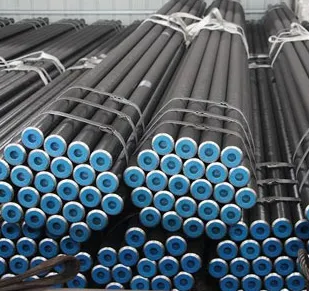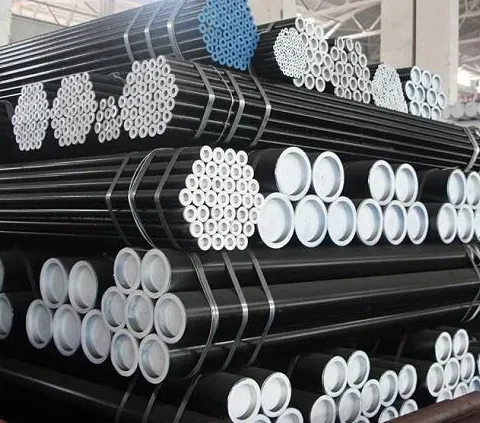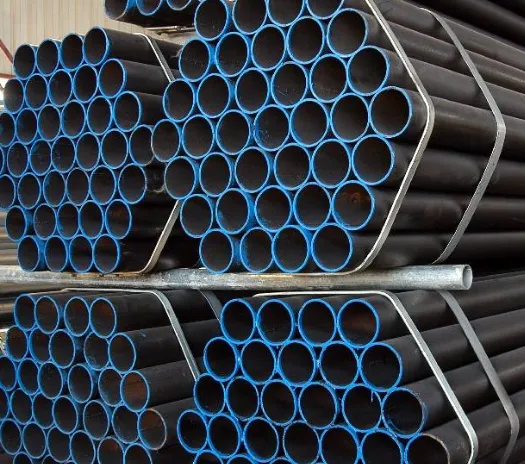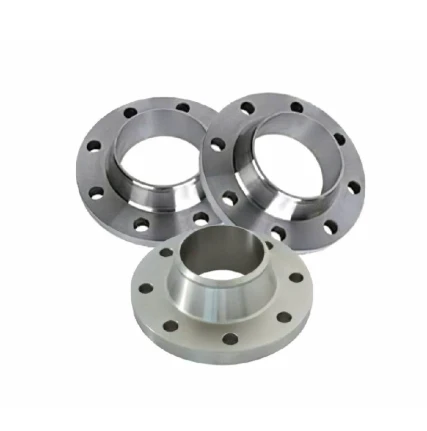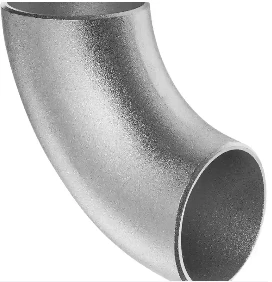NACE MR0175 steel pipe performance characteristics
Sulfide stress cracking resistance: In acidic environment containing H₂S, common steel is prone to sulfide stress cracking (SSC) phenomenon, resulting in material embrittleness rupture. NACE MR0175 steel pipe through strict control of the chemical composition of the material and heat treatment process, so that it has good SSC resistance, can withstand the stress in hydrogen sulfide environment, extend the service life of the pipeline.
Hydrogen cracking resistance: Hydrogen cracking (HIC) may also occur in the H₂S environment, that is, hydrogen atoms in the steel to form hydrogen molecules, resulting in internal pressure resulting in cracks inside the steel. NACE MR0175 steel pipe has strict limits on the content of sulfur, phosphorus and other impurity elements, while optimizing the microstructure of steel, improving the anti-HIC performance of the material, effectively preventing the diffusion and aggregation of hydrogen atoms, and preventing the occurrence of HIC.
Good corrosion resistance: In addition to SSC and HIC resistance, NACE MR0175 steel pipe also has a certain general corrosion resistance, can resist the corrosion of H₂S, carbon dioxide (CO₂), water and other media, to maintain the integrity of the pipeline and transportation capacity.
Chemical composition requirement
Carbon (C) : Generally, the carbon content is not more than 0.10%, and the lower carbon content helps to reduce the hardness and strength of the steel, improve its toughness and cracking resistance, reduce the segregation of carbon in the grain boundary, and reduce the sensitivity of sulfide stress cracking.
Sulfur (S) : Sulfur content is strictly limited to no more than 0.002%, because sulfur is a harmful element that tends to form sulfide inclusions in steel, which can become the origin point of cracks and accelerate corrosion and cracking of the material.
Phosphorus (P) : Phosphorus content usually does not exceed 0.020%, phosphorus will reduce the toughness and corrosion resistance of steel, controlling phosphorus content can reduce its adverse effect on steel properties.
-
Cangzhou Yulong Steel Co., Ltd.
-
Telefoni:
+86 13303177267 -
imeli:
admin@ylsteelfittings.com
- Igilisi
- Alapi
- Italia
- Sipaniolo
- Portuguese
- Siamani
- Kasaka
- Persian
- Greek
- Falani
- Lusia
- Polish
- Fa'a Thai
- Indonesian
- Vietnamese
- Zulu
- Kolea
- Uzbek
- Leai
- Serbian
- Malay
- Ukaraina
- Gujarati
- Haiti Kereole
- Hausa
- Havaii
- Eperu
- Miao
- Hungarian
- Icelandic
- igbo
- Aialani
- Iapani
- Javanese
- Kannada
- Khmer
- Rwanda
- Aferika
- Alapania
- Amharic
- Armenian
- Azerbaijani
- Basque
- Pelalusiana
- Bengali
- Bosnian
- Bulgarian
- Katalana
- Sepuano
- Saina
- Saina (Taiwan)
- Kosikana
- Croatian
- Czech
- Danish
- Eseperano
- Estonian
- Finnish
- Frisian
- Galician
- Georgian
- Kutisa
- Kirikisi
- TB
- Latina
- Latvian
- Lituaniana
- Lusemipoukisi
- Macedonian
- Malgashi
- Malayalam
- Maltese
- Maoli
- Marathi
- Mokoliana
- Myanmar
- Nepali
- Norwegian
- Norwegian
- Occitan
- Pasato
- Siamani
- Punitapi
- Lomani
- Samoa
- Sikotilani Gaelic
- Igilisi
- Shona
- Sindhi
- Sinhala
- Slovak
- Slovenian
- Somali
- Sundanese
- Swahili
- Swedish
- Tagalog
- Tajik
- Tamil
- Tatar
- Telugu
- Turkish
- tamaloloa Take
- Urdu
- Uighur
- Uelese
- Fesoasoani
- Yiddish
- Yoruba

Tusi lau savali iinei ma lafo mai ia i matou
Related News
-
Apr . 29, 2025What Are ANSI B16.5 Welding Neck Flanges?In the intricate world of industrial piping, where precision and reliability are non-negotiable, ANSI B16.5 welding neck flanges stand as a testament to engineering excellence.
-
Apr . 29, 2025Long Radius vs. Short Radius Butt Weld Elbows: How to Choose the Right TypeIn industrial piping systems, the selection of butt weld elbows plays a critical role in ensuring efficient fluid flow, minimizing pressure drop, and maintaining structural integrity.





